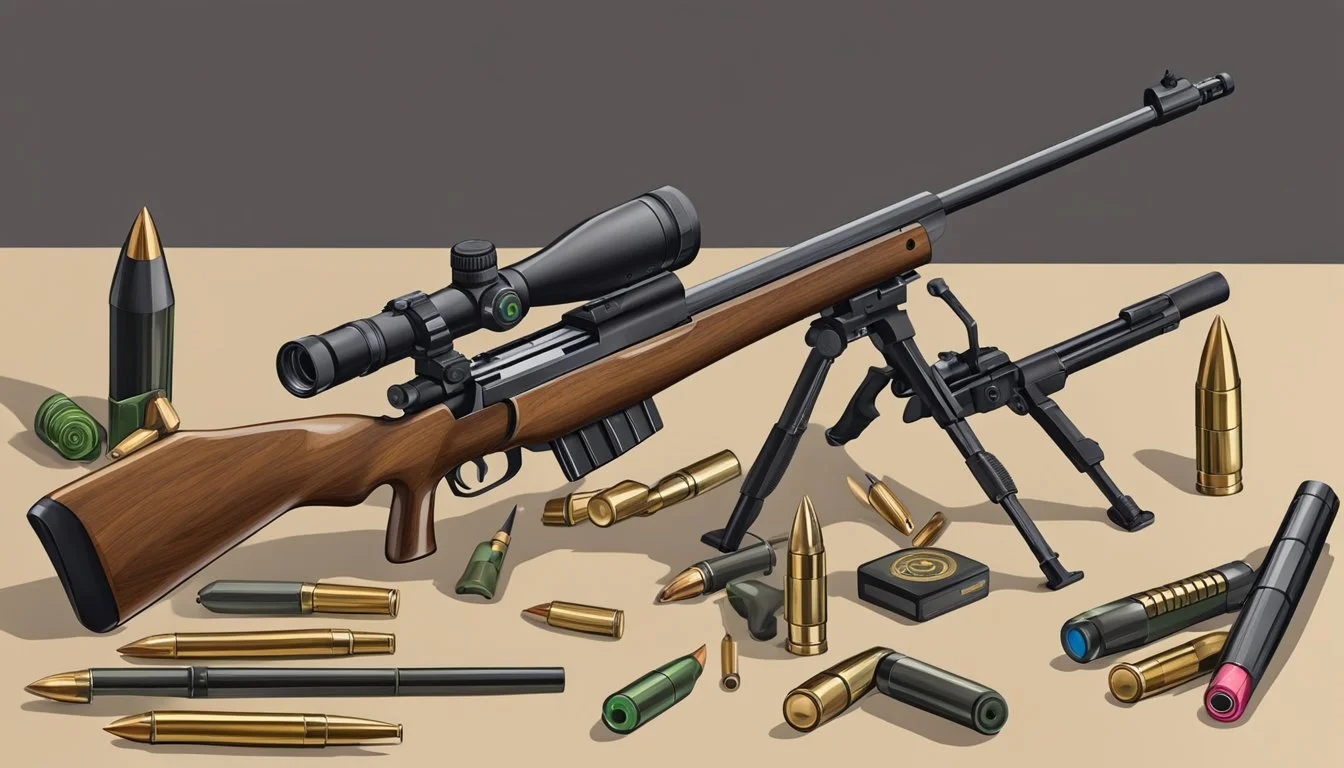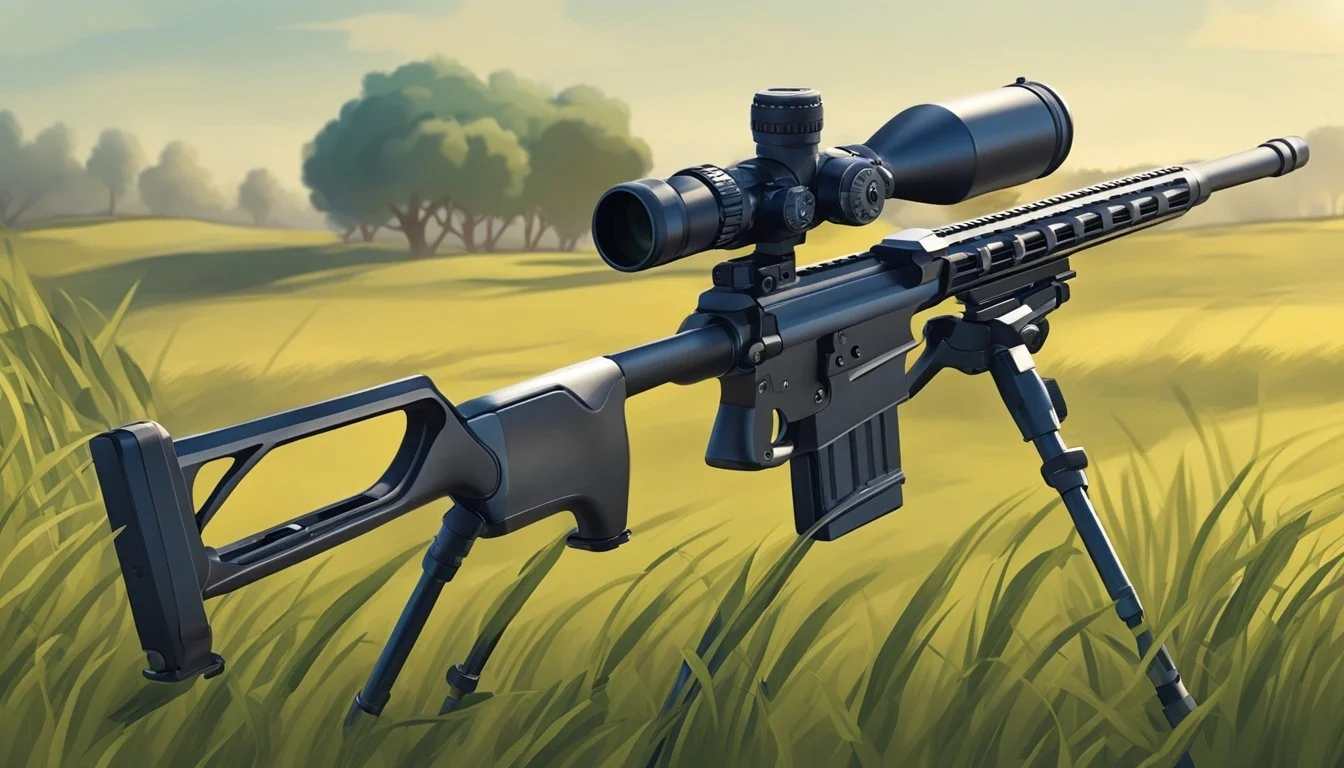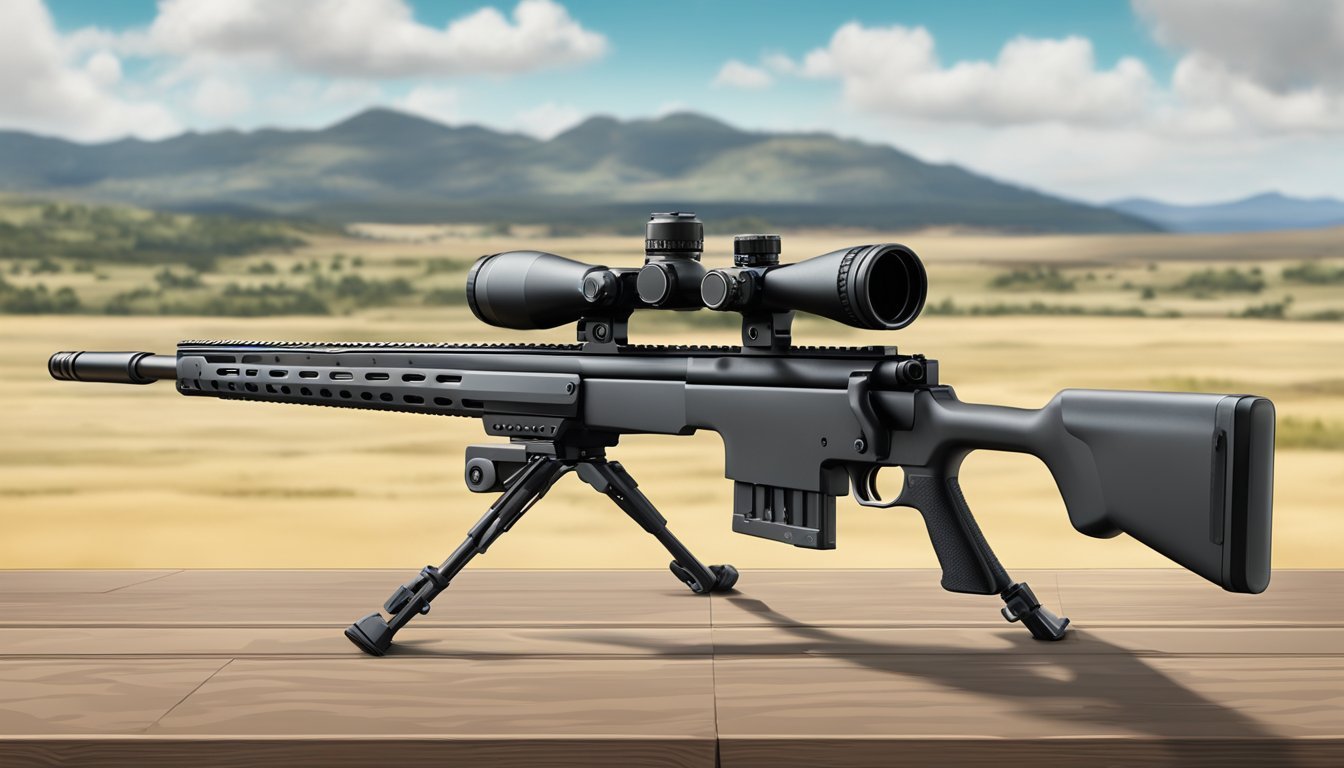Joseph Christopher: 6 Long-Range Shooting Techniques Used by the .22-Caliber Killer
Examining the Deadly Precision of a Serial Sniper
Joseph Christopher, known as the .22-Caliber Killer, terrorized Buffalo, New York in the early 1980s with a series of racially motivated murders. His killing spree began on September 22, 1980, when he shot and killed four African American men within 36 hours using a concealed .22 caliber sawed-off rifle.
Christopher's use of a .22 caliber rifle for long-range shootings demonstrated the deadly potential of this small-caliber weapon when combined with precise marksmanship techniques. The case highlights the importance of understanding firearms capabilities and the tactics employed by individuals intent on causing harm. This article examines six long-range shooting methods associated with Christopher's crimes, providing insights into the technical aspects of his attacks.
1) Proper Trigger Control
Joseph Christopher, known as the .22-Caliber Killer, likely employed specific trigger control techniques to improve his long-range shooting accuracy. Proper trigger control involves smoothly pressing the trigger straight back without disturbing the sight alignment.
Experts recommend using the pad of the index finger to apply steady, consistent pressure. This helps minimize unwanted movement of the firearm during the crucial moment before the shot breaks.
Shooters often practice dry firing to refine their trigger control. This allows them to focus on the trigger press without the distraction of recoil or noise.
Another key aspect is follow-through. Maintaining sight picture and trigger pressure even after the shot helps ensure consistency and accuracy.
Some shooters use a technique called "trigger reset," where they only release the trigger enough to reset the mechanism before the next shot. This can increase speed and precision in follow-up shots.
Proper breathing control is also closely linked to trigger control. Many marksmen exhale partially and pause their breathing just before pressing the trigger to maximize stability.
2) Breath Control Techniques
Proper breath control is essential for long-range shooting accuracy. Joseph Christopher likely employed specific breathing techniques to steady his aim during his attacks.
Shooters often use a method called natural respiratory pause. This involves exhaling fully and pausing for a few seconds before taking the shot. During this brief window, the body is most still.
Another common technique is rhythmic breathing. Shooters breathe in a controlled pattern, typically inhaling for 4 seconds, holding for 7 seconds, then exhaling for 8 seconds. This helps calm nerves and reduce heart rate.
Some marksmen practice diaphragmatic breathing, focusing on deep belly breaths rather than shallow chest breathing. This promotes relaxation and steadiness.
Experienced shooters learn to time their shots with their breathing cycle. They often fire during the natural pause after exhaling, when the body is most stable.
Regular breath control practice, even outside of shooting sessions, can improve overall technique. Shooters may incorporate breathing exercises into their daily routines to enhance their skills.
3) Utilizing Ballistic Calculators
Joseph Christopher likely employed ballistic calculators to enhance his long-range shooting accuracy. These tools provide crucial data on bullet trajectory, accounting for factors like distance, wind, and atmospheric conditions.
Ballistic calculators can be used to generate precise firing solutions for various ranges. They allow shooters to input specific data about their rifle, ammunition, and environmental conditions to receive accurate adjustments.
Some modern ballistic calculators can condense an entire set of calculations onto a single page or chart. This compact format allows for quick reference in the field, potentially improving a shooter's efficiency.
For .22 caliber rifles like the one Christopher used, ballistic calculators are particularly useful due to the round's limited range. They help compensate for the significant bullet drop experienced at longer distances.
Shooters can use these tools to "true" their rifle, a process of fine-tuning the calculator's predictions to match real-world performance. This results in more precise long-range shots, even with smaller caliber firearms.
4) Selecting the Right Ammunition
Joseph Christopher's choice of ammunition played a crucial role in his long-range shooting tactics. He favored .22 caliber rounds for their affordability and widespread availability.
The .22 Long Rifle cartridge was his primary selection. This rimfire ammunition offered low recoil, allowing for quick follow-up shots and improved accuracy over extended periods.
Christopher prioritized high-velocity rounds to maximize range and minimize bullet drop. He often used copper-plated hollow point bullets for their balance of penetration and expansion upon impact.
Consistency in ammunition selection was key to Christopher's approach. He would purchase large quantities of the same brand and lot number to ensure uniform performance across shots.
Christopher also experimented with subsonic .22 ammunition for situations requiring stealth. These lower-velocity rounds reduced muzzle report, making shot detection more difficult at a distance.
By meticulously selecting and testing various .22 caliber loads, Christopher was able to optimize his long-range shooting capabilities within the limitations of this smaller caliber.
5) Understanding Bullet Drop and Windage
Long-range shooters must account for bullet drop and windage to hit distant targets accurately. Bullet drop refers to the vertical distance a projectile falls due to gravity as it travels downrange.
Windage describes the horizontal drift caused by wind forces acting on the bullet. Both factors become increasingly significant at longer distances, requiring precise calculations and adjustments.
Shooters use ballistic charts, rangefinders, and environmental data to estimate bullet drop at various distances. They then adjust their rifle scopes or sights to compensate for the expected drop.
Wind speed and direction also play a crucial role. Experienced marksmen learn to read wind indicators like flags, grass movement, and mirage to gauge conditions. They apply windage corrections by aiming slightly into the wind.
Modern long-range rifles often feature mil-dot or MOA reticles that aid in making precise elevation and windage adjustments. Shooters must practice extensively to master these techniques and achieve consistent accuracy at extended ranges.
6) Scope Calibration Methods
Joseph Christopher likely employed precise scope calibration techniques to enhance his long-range accuracy. Proper calibration begins with zeroing the scope at a closer distance, typically 100 yards.
Windage and elevation adjustments are crucial for fine-tuning. Windage moves the point of impact horizontally, while elevation adjusts it vertically. Shooters must account for these factors at varying distances.
Many long-range shooters prefer scopes with advanced features like zero stop and tracking consistency. The Leupold Mark 5HD series is popular among professionals for its reliability in maintaining calibration.
Calibration also involves understanding and setting the proper eye relief. This ensures a full, clear sight picture and prevents scope-eye injuries from recoil.
For optimal long-range performance, shooters must account for parallax error. High-end scopes often include parallax adjustment knobs to eliminate this issue at different distances.
Regular recalibration is necessary to maintain accuracy, especially after transporting the rifle or in changing environmental conditions. Shooters may use specialized tools and targets to verify and adjust their scope's settings.
Understanding the Basics of Long-Range Shooting
Long-range shooting requires mastery of fundamental skills and proper equipment selection. Accuracy is paramount, demanding precision in every aspect of the shooting process. The right gear enables shooters to maximize their potential at extended distances.
The Importance of Accuracy
Accuracy in long-range shooting hinges on several key factors. Proper breathing technique helps stabilize the rifle. Shooters must control their breath, typically taking a shot during the natural respiratory pause. Trigger control is crucial - a smooth, consistent pull prevents jerking that can throw off aim.
Consistent and proper shooting position is vital. Whether prone, seated, or standing, maintaining the same body alignment for each shot improves repeatability. Wind reading skills are essential, as even slight breezes can significantly impact bullet trajectory at distance.
Regular practice hones these skills. Dry-fire drills allow shooters to perfect their form without expending ammunition. Live-fire exercises at varying distances build real-world experience and confidence.
Choosing the Right Equipment
Selecting appropriate gear is critical for long-range success. A quality rifle with a heavy barrel reduces vibration and improves accuracy. Caliber choice depends on intended use - popular options include .308 Winchester for versatility and 6.5 Creedmoor for its excellent ballistic coefficient.
Optics play a crucial role. A high-magnification scope with reliable turrets for elevation and windage adjustments is essential. First focal plane reticles maintain accurate ranging at all magnifications.
Ammunition selection is equally important. Match-grade rounds offer consistency in velocity and weight, crucial for predictable performance. Handloading allows fine-tuning loads for specific rifles.
Accessories like bipods or shooting bags provide stable platforms. A reliable rangefinder helps determine precise distances. Weather meters assist in gathering data for ballistic calculations.
Techniques Employed by Joseph Christopher
Joseph Christopher used specific long-range shooting methods during his killing spree in 1980. He demonstrated skill in adapting to environmental factors and maintaining stable firing positions.
Mastering Wind Estimation
Christopher showed proficiency in accounting for wind effects on bullet trajectory. He likely observed environmental cues like grass movement or flag ripples to gauge wind speed and direction. This allowed him to make windage adjustments when aiming his .22 caliber rifle.
Christopher may have used the mil-dot reticle in his scope to estimate wind drift. By noting how far the bullet impact shifted from the aim point, he could refine his wind calls for subsequent shots. He also potentially utilized the clock method, visualizing wind direction as hours on a clock face.
Utilizing Steady Shooting Positions
To increase accuracy, Christopher employed stable shooting stances. He likely used the prone position, lying flat on the ground to minimize body movement. This stance offers a low profile and solid support for precise aiming.
Christopher may have also utilized improvised rests to steady his rifle. Common objects like tree branches, rocks, or building ledges can serve as makeshift bipods. By bracing the rifle against a firm surface, he could reduce tremors and improve shot placement.
Breath control was another probable technique. Christopher likely took slow, measured breaths and paused his breathing momentarily while squeezing the trigger. This prevents respiratory movements from disturbing aim at the crucial moment of firing.






